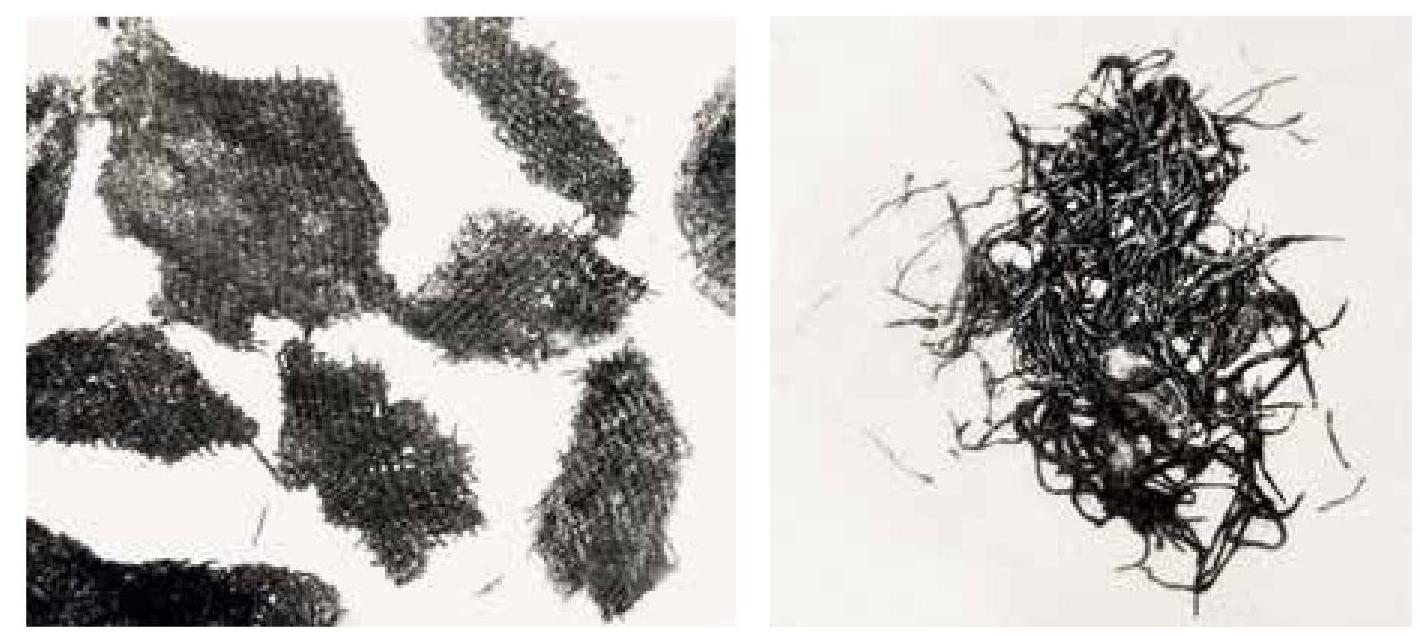越地缯纱纹样新?海上东风又一春
2020-06-21郑海燕
郑海燕



吴兴历来有“鱼米之乡、丝绸之府”的美誉。在中国古代的历史上,包括今天吴兴区在内的湖州,其丝绸(包括生丝)行销海外、风靡亚欧,主要是在明清两朝,这些往事与“一带一路”中的海上丝绸之路有着紧密的联系。
首先,先讲讲湖丝的质量。在明代中叶,全国蚕丝业的重心已移向湖州一带,湖州除了成为国内产丝的中心,其质量同样闻名全国。丝织业发达的苏州、南京等地所用蚕丝,主要仰仗湖丝;福建漳州的纱绢、广东的粤绸、粤缎等名优特产,必用湖丝。史料中有“蚕丝之贡,湖郡独良”的记载。如明代茅瑞徵在其撰写的《禹贡汇疏》中记载道:“盖是时,丝利遍于齐鲁间,今独湖丝最著。”明代人吴珫编辑的《三才广志》中又云:“湖丝产湖州,纤作之用,甲于天下。”明朝宋应星的《天工开物》中说:“湖丝所织者,罗面千石不损,若他方黄丝所为,经百石而已朽也。”
那么为何湖丝的质量高?据专家们研究,因为从明中叶到清前期,我国的蚕桑生产的区域已相对缩小,集中于杭嘉湖地区,尤其是以湖州周边一带,蚕桑生产最为发达,是国内外丝织原料的主要供应地。杭嘉湖地区所生产的蚕丝之所以品质优良,除了当地的气候条件适宜于桑树生长外,明清时这一带桑树栽培技术高、桑叶叶质好,是湖丝优质的基础;养蚕技术精细,能保证蚕健康生長,是湖丝品质优良的一个重要因素;而缫丝水平的提高,更是湖丝品质优良的一个关键。
明代时,湖丝贸易已十分发达,湖丝开始行销海外,且有明确的史料可以证明欧洲人也能买到湖丝。据有关专家研究,包括湖丝在内的中国丝织品,在明中叶以前主要是通过官方指定的一些对外口岸出口(如广州)。在洪武(1368~1398年)到弘治(1488~1505年)年间,东南沿海居民的海上走私贸易,还只是偷偷摸摸地进行,进入16世纪以后,东南沿海居民的海上走私贸易开始频繁发生,发展到后来,丝绸在浙江成为民间直接与欧洲人进行交易的主要商品。明代嘉靖年间,属于今天舟山的双屿港(当时属宁波),一度成为东亚地区最活跃的走私贸易中心,很多葡萄牙人开始在双屿港与中国人进行交易,直到嘉靖二十七年(1548年)双屿港这个走私贸易中心被明朝官兵完全摧毁。请看如下史料,《明史·朱纨传》记载:“初,明祖定制,片板不许入海。承平久,奸民阑出入,勾倭人及佛郎机诸国入互市。闽人李光头、歙人许栋踞宁波之双屿为之主,司其质契。”明朝人郑舜功受明朝政府派遣赴日本考察,撰写了《日本一鉴》,书中记载:“嘉靖庚子(十九年),继之许一(松)、许二(栋)、许三(楠)、许四(梓),勾引佛郎机国夷人,络绎浙海,亦市双屿、大茅等港。”这里的佛郎机国夷人就是指葡萄牙人。可见,双屿港这个走私贸易中心中,一项重要的交易商品就是湖丝,而葡萄牙人显然是在双屿港买到湖丝的。
另一个包括湖丝在内的中国丝织品出口海外的窗口就是澳门。据史料记载,葡萄牙人租居澳门后,便以澳门为支点建立了多条国际贸易航线,做起了海上贸易中转生意。他们将明朝的丝织品、瓷器等商品通过澳门销往世界各地,再带回大量的白银充实明朝的国库,主要航线有澳门——马六甲——果阿——好望角——里斯本,还有澳门——长崎(日本),澳门——马尼拉等。
湖丝在明代出口海外,还有一个重要的渠道商就是福建人。据明代王世懋所撰写的《闽部疏》所载,“闽人货湖丝者,往往染翠红而归织之”,福建人以“湖丝”为原料,将其加工成丝织品,加工完成后,闽人再予以出售。
当然,湖丝也会直接作为商品进行出口,如明代嘉靖年间,福建泉州地区的海上贸易十分活跃,嘉靖年间黄堪的《海患呈》中即说:“有日本夷船数十只,其间船主水梢,多是漳州亡命,谙于土俗,不待勾引,直来围头、白沙等澳湾泊。四方土产货,如月港新线、石尾棉布、湖丝、川芎,各处逐利商民,云集于市。”围头即在今天的泉州境内。
而据相关历史记载,南洋是湖丝销给欧洲人的一个重要的中转区域。成书于万历四十五年的《东西洋考》中记载道:“大泥,……华人流寓甚多,趾相踵也。舶至,献果币,如他国。初亦设食待我,后来此礼渐废矣。货卖彼国,不敢征税。惟与红毛售货,则湖丝百斤,税红毛五斤,华人银钱三枚。”这个大泥国即是现在的泰国南部北大年府一带,当时有很多华人在此贸易,而红毛在明时主要是称欧洲的荷兰人,当时荷兰人在大泥国也设有贸易站。从此条史料可见,明代时湖丝也已经通过南洋的贸易中转站出售给欧洲人了。
再如明代徐光启在《海防迂说》中曾指出:“于是有西洋番舶者,市我湖丝诸物走诸国贸易。若吕宋者,其大都会也,而我闽、浙、直商人,乃皆走吕宋诸国,倭所欲得于我者,悉转市之吕宋诸国矣。”
明末给事中傅元初在《请开洋禁疏》中说:“是以,中国湖丝百斤值银百两者,至彼得价二倍”,这里的“彼”即主要指吕宋。可见,当时的吕宋(今菲律宾境内)也是湖丝远销出口的一个重要中转站。徐光启写《海防迂说》时,吕宋已被西班牙所占领(1571年,西班牙占领了吕宋岛,时徐光启虚龄9岁),可见通过吕宋,湖丝也已销售给了欧洲人。
It was during the Ming (1368-1644) and the Qing (1644-1911) dynasties that raw silk from Huzhou became a big international trade. Raw silk from Huzhou dominated the market largely because of its super quality. In the middle period of the Ming, Huzhou became the national center of sericulture. Suzhou and Nanjing, two important textile-manufacturing powerhouses in Jiangnan, bought large quantities of raw silk from Huzhou simply because of its super quality. Silk fabric producers in Fujian and Guangdong also relied heavily upon the raw silk supply from Huzhou.
Hangzhou-Jiaxing-Huzhou Plain in the north of Zhejiang became the number one national sericulture center essentially because of the advanced techniques used in cultivating mulberry trees, rearing silkworms, and reeling silk from cocoons.
This explains why raw silk from Huzhou sold so well on the international market from the 14th century on. Research indicates that Europe was a major buyer of raw silk from Huzhou in the Ming Dynasty.
In the early decades of the Ming, raw silk was exported to overseas buyers largely through the ports officially designated for international trade such as Guangzhou. However, smuggling was rampant in Chinas southeast. In the 16th century, Zhejiang became a center of raw silk from Huzhou between private businesspeople and European traders. The private business people smuggled raw silk to the European traders and raw silk was then shipped to the overseas market. Shuangyu, an island in Zhoushan Archipelago, became an international trade entrep?t. It was built and governed by Portuguese traders who first arrived, and were followed by Spanish and Japanese traders. The smugglers paradise was destroyed in 1548 by the Chinese government. For decades, Shuangyu Port in Zhoushan was a major export channel through which raw silk products from Huzhou were shipped to European destinations.
Another major trade center for raw silk export during that time was Macao. Portuguese traders set up a number of international trade routes in Macao, shipping silk products and porcelains to various destinations across the world and brought silver dollars back to China. The major routes included a route from Macao to Lisbon via Malacca, Goa, Cape of Good Hope, a route from Macao to Nagasaki, Japan, and a route from Macao to Manila.
Traders of Fujian played a key role in selling Huzhou silk to the overseas market. A book written in the Ming Dynasty reveals some traders in Zhangzhou, a city in Fujian, were gangsters and traded with Japanese businesspeople. The book documents raw silk from Huzhou among the trade items.
The Southeast Asia also played a key role in shipping silk goods to Europe. Luzon in the Philippines was a transship port of silk trade between China and Europe. Traders from China shipped silk and other goods to the states on Luzon first. Then buyers went there to buy and ship their goods to further destinations. Another key transship port in Chinas silk trade with foreign countries was in Pattani, a city on the east coast of the Malay Peninsula, near the mouth of the Gulf of Thailand. Chinese traders did business with Hollanders there. A book written in 1617 by a Chinese scholar documents raw silk from Huzhou was a major commodity that changed hands at Pattani. Based on these historical accounts, it can be reasonably deduced that Huzhou silk was shipped to Europe during the Ming Dynasty.
